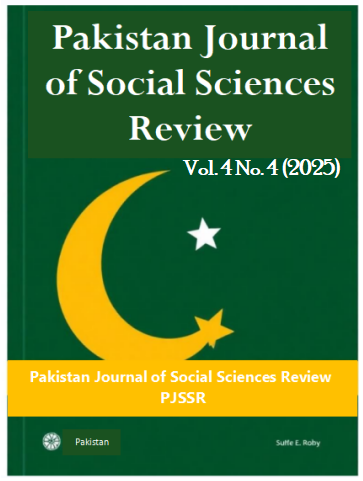RELATIONSHIP BETWEEN STUDENTS’ MOTIVATION AND ANXIETY IN ENGLISH LANGUAGE LEARNING AT SECONDARY LEVEL
Abstract
This quantitative correlational research was designed to investigate the relationship between students’ motivation and anxiety in the context of learning English as a second language at the secondary school level. A randomly selected sample of 600 tenth-grade students, drawn from 20 different secondary schools within the Lahore district, participated in the study. Data collection was carried out through two structured and adapted questionnaires, both employing a five-point Likert scale to measure the relevant variables. To analyze the collected data, a series of inferential statistical methods were applied, including Pearson r to assess the association between variables, independent samples t-test to explore gender-based differences, and linear regression to evaluate the predictive impact of anxiety on motivation. The findings revealed a statistically significant inverse correlation between motivation and anxiety in English language learning, indicating that students who reported higher levels of anxiety tended to exhibit lower levels of motivation. Furthermore, gender-based analysis showed a significant difference in motivational levels, with male students displaying greater motivation than their female peers. However, no statistically significant gender differences were identified in terms of anxiety levels. These outcomes highlight the critical role of addressing and mitigating anxiety in language learning environments, as doing so may contribute to enhanced student motivation and improved academic performance in second language acquisition.
Key Words: English Language Learning, Students’ Motivation, Language Anxiety and
Secondary School Level


